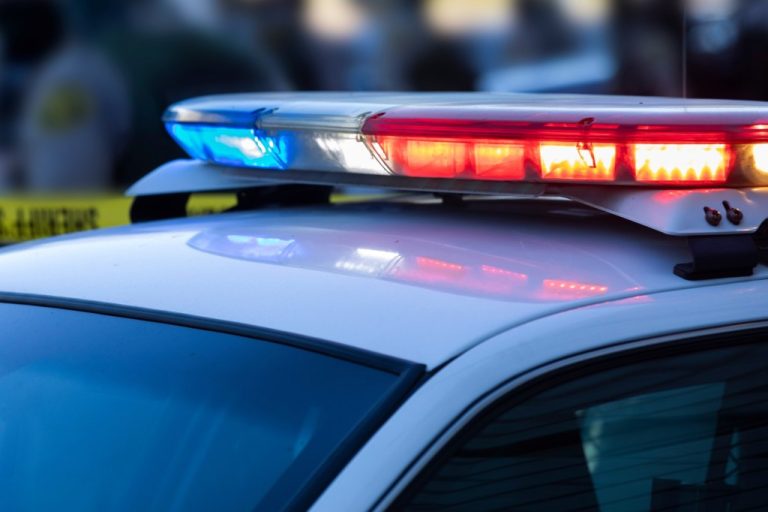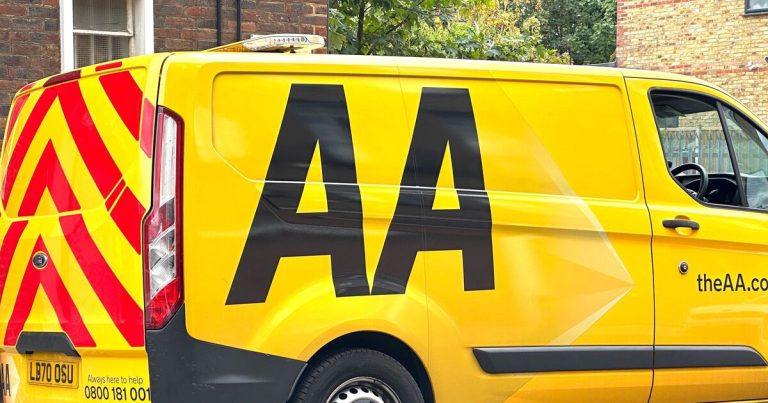
In a decision that bolsters the police use of streetlight cameras as investigative tools, a state appellate court upheld a San Diego murder conviction in a case solved by using the footage, finding that the defendant did not have an expectation of privacy when he moved about on a downtown street.
The case, the 2019 slaying of a business owner gunned down during a robbery, was also among the first times that San Diego police had used footage from streetlight cameras in an investigation. Police gleaned the license plate of the suspected killer, a man who wore a Halloween mask with the face of an elderly woman.
The unanimous ruling from the 4th District Court of Appeals on Friday found that police did not conduct a “search” or violate the Fourth Amendment in accessing the streetlight footage.
The ruling is the first in California to address whether police use of the streetlight cameras violates privacy rights. The appellate panel published the short ruling — barely nine pages — so that it could be used as guidance in other cases.
The court found that defendant Kevin Cartwright “did not have an objectively reasonable expectation of privacy when he traversed a public right of way in downtown San Diego in the middle of a business day.”
Cartwright was convicted in San Diego Superior Court in the death of Ghedeer Tony Radda, 49, the owner of Bottom Price Flooring on G Street.
San Diego’s use of streetlight cameras erupted into controversy after the public learned in 2020 the city had installed 3,000 of them around the city two years earlier. The idea behind the cameras was to collect data to monitor parking and traffic patterns.
Police first learned of the cameras in 2019 and started accessing them on a limited basis to solve crimes. The investigation into Radda’s slaying was the 10th time San Diego police had used the cameras.
Critics blasted the existence of the massive camera system as an invasion of privacy and also raised racial equity concerns. The uproar led then-Mayor Kevin Faulconer to shut down camera access until the city passed an ordinance covering the cameras and all other surveillance by police. That ordinance took years to craft. It passed, but it remains a controversial work-in-progress.
With the ordinance in place, the city is bringing back the streetlight cameras — just a few at a time, with an eye toward a network of 500 of them. The cameras will not be live-monitored, rather police will pull the footage to review it after a crime has been reported. Images not downloaded will be recorded over after five days.
And this time around, the cameras will also be equipped with license-plate readers. San Diego police have used such readers before on patrol cars.
In 2022, a jury convicted Cartwright of murder and other crimes, and he was sentenced to life in prison without parole. Cartwright appealed, arguing that using the footage amounted to a warrantless search by police in violation of the Fourth Amendment protection against improper search and seizure.
Security footage helped police identify their suspect as a man in a mask — an elderly woman’s face with gray curly hair — accompanied by a woman in a long purple wig. They had arrived together in a gold Yukon SUV.
In its ruling, the appellate court found that when Cartwright drove downtown and parked, the vehicle’s movement and location were visible to anyone, and he could not assert an expectation of privacy.
The panel also noted that the images obtained from the streetlight cameras were “remarkably similar” to images caught in private security cameras behind another store in the area.
“We note this to demonstrate that Cartwright could not maintain an objectively reasonable expectation of privacy in the downtown, urban public spaces when any number of private businesses may have maintained similar cameras that capture similar images,” the court wrote.
In rejecting Cartwright’s case, the appellate panel said his case differed from a U.S. Supreme Court case in which the court found that police use of cell-site location data — obtained without a warrant — to reconstruct a suspect’s movements invaded an expectation of privacy.
The appeal court also said the local case differed from a Baltimore case in which police conducted aerial surveillance and combined it with traditional surveillance data to track a person’s movement retroactively.
Baltimore police used software to integrate the surveillance images and data. But in San Diego, the court said, the city’s camera program stands alone and captures information “voluntarily conveyed to anyone in a public space who cares to look — something any police officer could have done without a warrant.”





